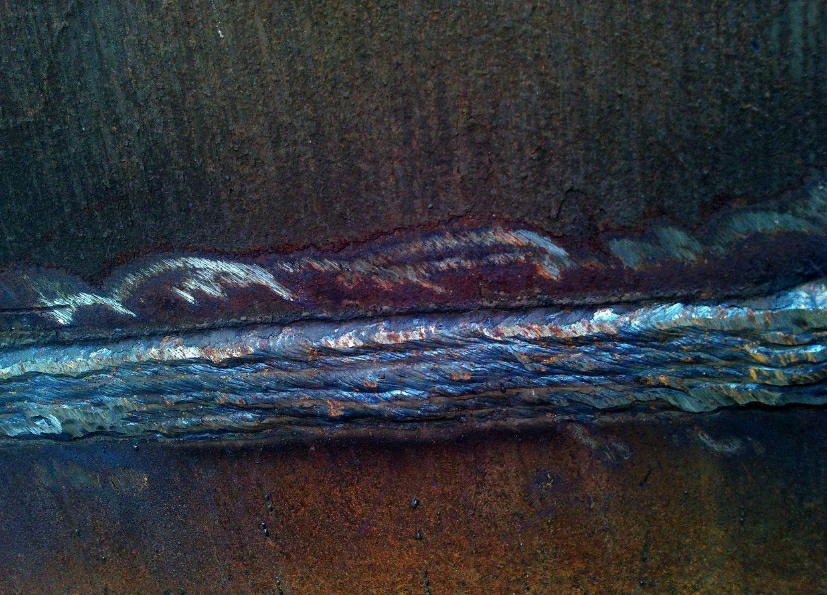Mastering the Art of Welding: Just How to Stay Clear Of Undercut Welding Issues for Flawless Fabrication Results
Performance and precision are critical in the world of welding, where even the slightest blemish can endanger the structural honesty of a produced item. One typical challenge that welders face is undercutting, a problem that can lead and weaken a weld joint to expensive rework. By recognizing the source of undercut welding and carrying out effective strategies to stop it, welders can elevate their craft to new levels of excellence (Preventing weld undercut). In the quest of remarkable construction outcomes, grasping the art of welding to avoid undercut issues is not simply an ability yet a requirement for those pursuing excellence in their job.
Recognizing Undercut Welding

To protect against undercut welding, welders should guarantee proper welding specifications, such as adjusting the existing, voltage, travel speed, and keeping the proper electrode angle. By understanding the reasons of undercut welding and applying preventative procedures, welders can achieve high-grade, structurally audio welds.
Reasons of Undercut in Welding
Comprehending the factors that add to undercut in welding is important for welders to produce premium, structurally sound welds. Undercutting takes place when the weld steel does not correctly load the groove created in between the base steel and the formerly deposited weld metal. A number of variables can result in damage in welding. One common cause is extreme heat input. Welding at high temperatures for extensive periods can cause the base steel thawing even more than preferred, causing undercut. Insufficient welding existing or inaccurate welding rate can also add to damage. Inadequate current might not supply sufficient warmth to thaw the base and filler metals appropriately, while excessive rate can avoid appropriate blend, causing undercut. In addition, improper electrode angles or wrong lantern adjustment strategies can develop locations of reduced weld metal deposition, promoting undercut. Understanding these causes and implementing appropriate welding techniques can assist protect against undercutting issues, guaranteeing sturdy and solid welds.
Strategies to stop Undercutting

To mitigate the threat of damaging in welding, welders can utilize strategic welding techniques intended at enhancing the quality and honesty of the weld joints. Furthermore, utilizing the proper welding strategy for the details joint setup, such as weave or stringer beads, can add to minimizing undercutting.
Employing back-step welding strategies and controlling the weld bead profile can additionally help distribute heat uniformly you could check here and decrease the threat of undercut. Normal evaluation of the weld joint throughout and after welding, as well as applying top quality assurance procedures, can assist in detecting and resolving undercutting concerns promptly.
Relevance of Proper Welding Specifications
Picking and maintaining proper welding parameters is necessary for accomplishing effective welds with very little defects. Welding criteria refer to variables such as voltage, existing, travel rate, electrode angle, and securing gas circulation price that directly influence the welding process. These specifications should be very carefully changed based upon the sort of product being bonded, its density, and the welding technique employed.
Appropriate welding specifications make sure the best amount of heat is put on melt the base metals and filler product uniformly. If the parameters are established expensive, it can bring about extreme warmth input, triggering spatter, distortion, or burn-through. On the various other hand, if the criteria are as well low, insufficient fusion, lack of infiltration, or undercutting might take place.
Quality Control in Welding Operations

Conclusion
To conclude, understanding the art of welding needs a comprehensive understanding of undercut welding, its reasons, and methods to avoid it. By ensuring appropriate welding specifications and implementing quality assurance techniques, perfect manufacture outcomes can be achieved. It is essential for welders to regularly make every effort for excellence in their welding procedures to prevent undercut problems and generate high-quality welds.
Undercut welding, a common defect in welding processes, happens when the weld steel doesn't properly fill the groove and leaves a groove or anxiety along check out here the welded joint.To protect against undercut welding, welders need to guarantee correct welding criteria, such as changing the current, voltage, travel speed, and maintaining the correct electrode angle. Insufficient welding present or inaccurate welding speed can also add to undercut.To mitigate the risk of damaging in welding, welders can employ critical welding strategies aimed at enhancing the high quality and integrity of the weld joints.In final thought, understanding the art of welding calls for a thorough understanding of undercut welding, its reasons, and techniques to prevent it.
Comments on “Preventing Weld Undercut: Proven Approaches Every Welder Should Know”